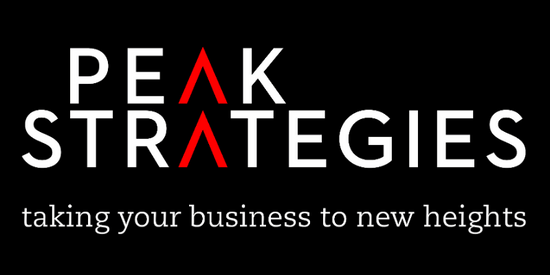How is sales growth calculated?
The world for pharmacy owners has evolved from the simplicity of just writing scripts and playing with chemicals. It involves staff management, managing a storefront, rivalling competitors, customer service, stock management, profitability and so much more. You can no longer be a pharmacist owning a business, you need to be entrepreneurial.
Sometimes a pharmacy owner can feel isolated and overwhelmed, that is why we wanted to implement our Peak Strategies Blog. Firstly, what does Peak Strategies know about owning a pharmacy? I personally have over twenty year’s experience dealing with pharmacies, and in 2010 I created Peak Strategies with the aim to create a firm that specialises in accounting for pharmacies and we that’s exactly what we do! We have watched our pharmacy clients face many challenges both positive and negative, and come out the other end. We are proud that they have let us stay a part of their journey and this year we are planning to give back. We have brainstormed together all the information we have learnt dealing firsthand with various pharmacy owners and formulated some content on how to improve Pharmacy performance.
Welcome to Peak Strategies regular blog solely dedicated to pharmacy.
We envision this blog to be the source for pharmacy owners; it will touch on the essential KPI’s that measure a pharmacy businesses performance, profitability, stock management and much more.
So let’s get started!
This week we cover the number 1 KPI that defines so much of a pharmacy’s success. Get this right and business life should mostly be a lot easier.
The whole purpose, historically, of a pharmacy’s existence is to sell medications and health products to customers. That is a fairly basic concept and there is nothing revolutionary there. But the landscape is changing and future pharmacy will be different beast. The key indicator that needs to be measured and kept track of is Sales Growth.
So how is Sales growth calculated?
Sales growth (%) = (Sales for current period less Sales for Previous Period) x 100
Sales for Previous Period
When I refer to Previous Period, if you are calculating the sales growth for 2016 financial year, you calculate Sales for 2016 less sales for 2015 divided by sales for 2015. If you are calculating the sales growth for say July to December 2016, then it would be the Sales for the July to December 2016 period, less the Sales for the July to December 2015 period.
Peak-Strategies-Bookkeeping-H
This will give you a percentage change in sales when you compare the current period to the previous comparable period. Industry trends in previous years have shown negative grown factors. 2015 financial year was -2.51%, 2014 -1.79% (Source; Guild Digest). Certainly amongst our client base those negative trends were present. But there were also many others showing positive growth year on year. It really is a case by case basis. The important part here is to keep track of your own Sales Growth factors and look into your own factors that may be influencing the trends. Negative sales growth is not good. Fewer sales generally mean less profit and less value for your business. Don’t just measure and think “damn, that’s a nuisance”. Do something about it. Make changes.
A couple of points here you should be aware of. Firstly make sure you are matching like with like. Ideally you want this measure to show you how the businesses sales are performing. For the measure to be meaningful though you should remove the high cost drugs and any export sales from this equation. These will distort the results. For our clients we do management reporting for we prefer these high cost drugs to be separated from the normal business sales. That makes it easier to do proper analysis and comparisons. Secondly be careful of comparing short periods, for example a month or two. Natural fluctuations will occur and therefore the result may not be a true reflection of an ongoing trend. So be careful not to read too much into KPI for short periods of time.
This figure on its own is one thing, but for it to truly make sense you need to compare it to previous data from your store to get an idea of the trends. It also helps to compare it to industry data. Your options here are to compare it to the data from Guild Digest publication, or organisations like Intellipharm, or Nostradata. The problem with the Guild Digest is the data is already old by the time the document is published which loses its effectiveness. Therefore, you will need to look into other alternatives. But do your homework to find the best data. You can contact Peak Strategies to help you out with finding reliable data.
You should also calculate growth rates for dispensary, retail and even analyse your individual departmental performances. These results provide valuable insights into the performance of your business. Calculating this for a whole of business result is good to know. But breaking this down further into smaller segments will give you greater insight and enable you to know which areas are growing and which ones aren’t. This will result in more targeted actions and decisions.
So what growth targets should you be aiming for? In simple terms and in light of recent years any positive sales growth is good growth. Many are going backwards which is not good at all. Anything from nil to 2% would be considered good from the data we see. From 2% to 5% would be great. Anything 5% plus is really good. If you are negative, well you need to come see us and let us help you turn that around.
Good data produces good results, which makes for better decisions. What you can measure you can manage.
We look forward to sharing our content with our readers and to helping even more pharmacy owner’s achieve their business goals. Watch this space.
Like what you're reading? Subscribe now.


